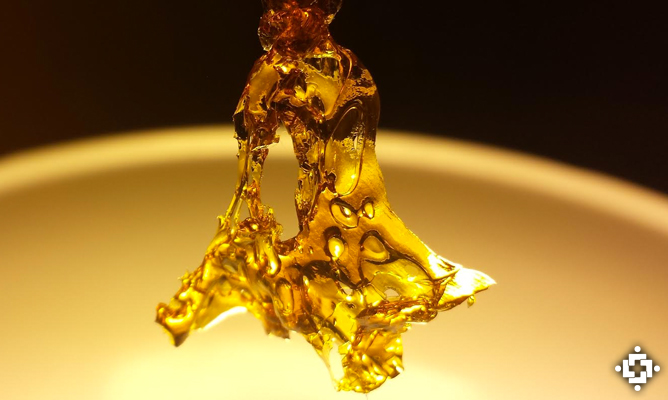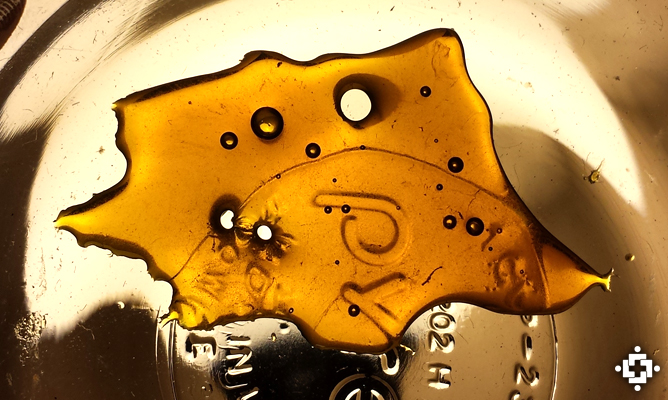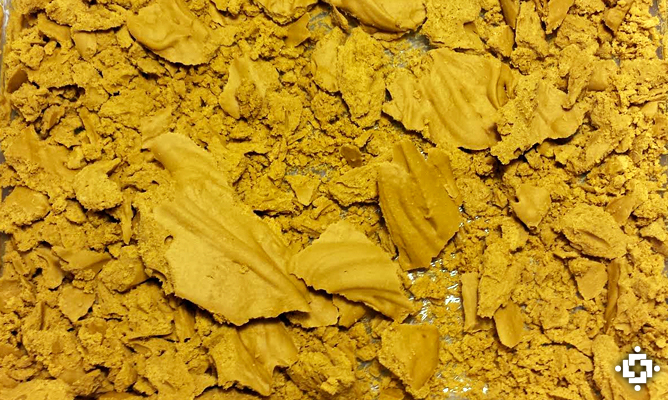If you’ve been paying much attention to the cannabis industry the past few years, it’s clear that cannabis concentrates have skyrocketed in popularity. However, the dab-culture has had to withstand a certain amount of opposition, with some people raising concerns over the perceived cleanliness of the products.
While we’ve discussed this sort of thing in the past (i.e. Vital Steps to Making Award-Winning Extracts), there has been an unfortunate lack of scientific literature available about proper ways to purge your concentrates of residual solvents, while still ending up with a connoisseur-quality product in the end.
With that in mind, Nugrun Concentrates conducted an experiment earlier this month in order to provide evidence of the effects of whipping your concentrates during the purging process. According to the results, it appears that whipping can significantly speed up the purging process, although it could be at the expense of flavor and the “shatter” consistency preferred by many patients.

Nugrun Concentrates Explores Whipping vs Not Whipping
Using a batch of concentrate produced from the Blue Dream strain, Nugrun Concentrates had a total of 16 concentrate samples lab tested by Steep Hill Halent for potency, terpene content, and remaining residual solvents.
Nugrun followed the same butane extraction process for each sample, but the experiment consisted of two major variables – (1) the amount of time spent vacuum purging, and (2) whipped vs not-whipped.
“Nugrun removed 2 samples at 8 different points along the purge process: 5 minutes, 24 hours, 48 hours, 72 hours, 96 hours, 120 hours, 144 hours, and 168 hours.”
Each slab was placed into a 0.9 cubic foot Across International vacuum pump with reconfigured hosing at 105° F in order to let them “muffin”, a common sight in the early stages of vacuum purging concentrates, for approximately 5 minutes.
They were then removed from the oven, and the temperature was adjusted to 102° F.
The temperature was kept around 102° F for the remainder of the experiment, which lasted 168 hours in total. That being said, Nugrun removed 2 samples at 8 different points along the purge process: 5 minutes, 24 hours, 48 hours, 72 hours, 96 hours, 120 hours, 144 hours, and 168 hours.

In order to test the effects of whipping, half the samples were flash heated at 130° F for 30 seconds so in order to liquify the concentrate. They were then whipped with an electronic whipping attachment for approximately 60 seconds before being placed back in the vacuum for approximately 12 hours.
Whipping May Result In Cleaner, Less-Flavorful Concentrates
According to the results of Nugrun Concentrates‘ experiment, there was an obvious difference between the samples that were whipped and those that were not. This is particularly true in regards to the amount of residual solvent that remained in the final product.
Residual solvent levels are often presented in parts per million (ppm). Washington State has determined that concentrates sold for vaporization purposes must contain no more than 500 ppm of residual solvent in the final product. Regulations aside, patients with issues like asthma and chronic obstructive pulmonary disease (COPD) should be able to know that they are receiving the cleanest concentrates possible.
“A batch that was whipped and vacuumed for a total of just over 12 hours (<10 ppm) was much cleaner than the batch that was vacuum purged for 7 days straight without whipping (730 ppm).”
The results from Steep Hill Halent show the samples that were whipped had expressed significantly lower residual solvent levels than the samples that were not whipped. A batch that was whipped and vacuumed for a total of just over 12 hours (<10 ppm) was much cleaner than the batch that was vacuum purged for 7 days straight without whipping (730 ppm).
 Mind you, this improvement in residual solvent levels was not without its trade-offs. For one, whipping your concentrate in the manner described above often results in more of “budder” or “crumble” consistency, instead of the illustrious “shatter” (glass like) consistency so many of us have come to know and love.
Mind you, this improvement in residual solvent levels was not without its trade-offs. For one, whipping your concentrate in the manner described above often results in more of “budder” or “crumble” consistency, instead of the illustrious “shatter” (glass like) consistency so many of us have come to know and love.
Perhaps more important was the loss of terpenes that resulted from the whipping process. For instance, the samples that were whipped lost over half their terpinolene content, which was the most prominent terpenoid found in each sample. In turn, it’s safe to expect that the whipped concentrate samples would be less aromatic and less flavorful.
All in all, the results of this experiment show that whipping during the purge process can significantly reduce the amount of time it takes to achieve clean cannabis concentrates, albeit with a change in flavor and consistency.
Cannabis Concentrates Experiment: The Effects Of Whipping By Nugrun Concentrates
No comments:
Post a Comment